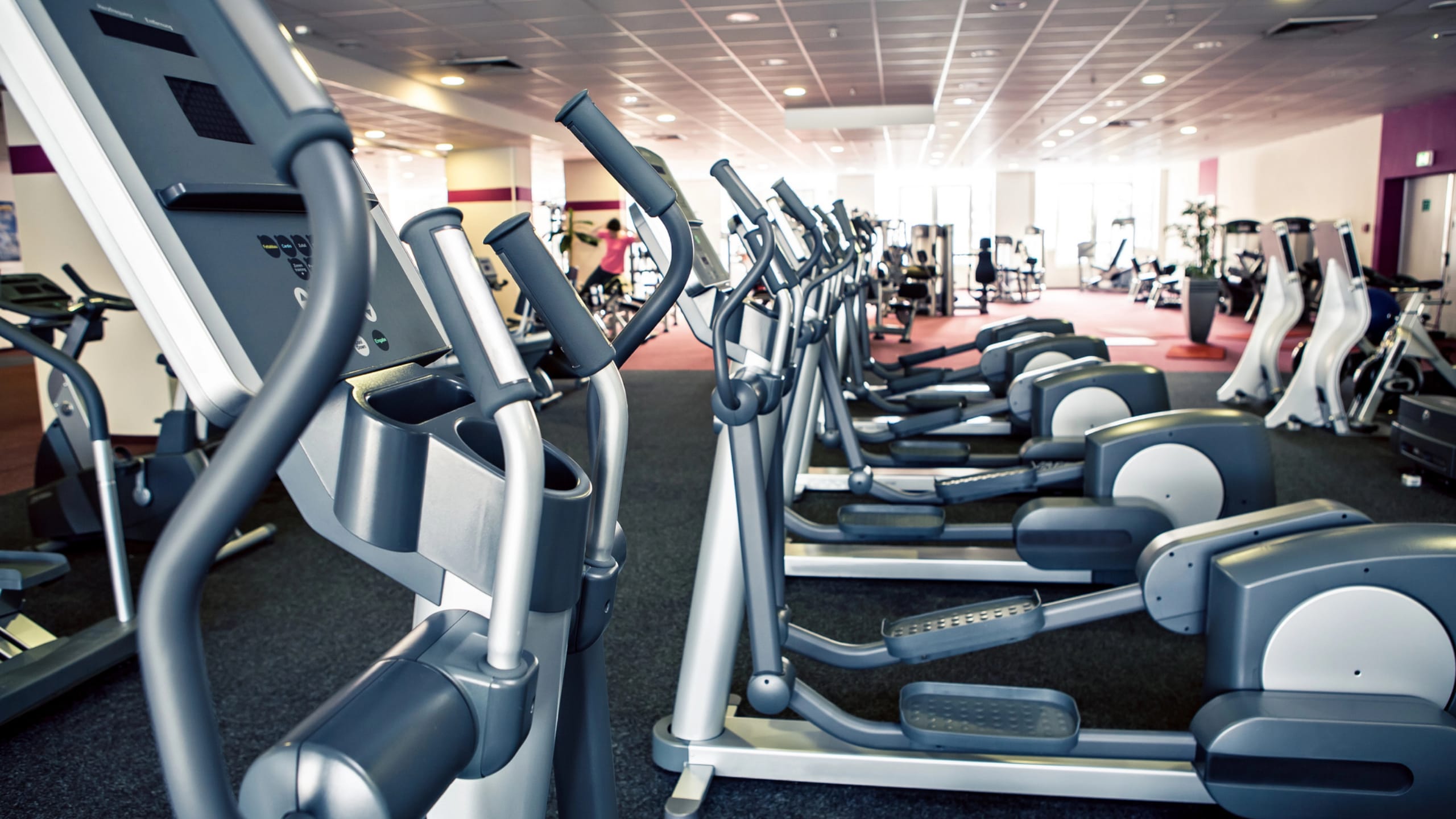

Overall, the benefits of neurodiverse sensory fitness programs are vast and impactful. From improving physical health to enhancing emotional regulation and fostering social connections, these programs offer something for everyone regardless of their neurology. By embracing diversity and celebrating individual differences, we can create a more inclusive society where everyone has the opportunity to thrive.
It is essential to provide environments that cater to the diverse needs of all individuals, including those with sensory processing differences. By understanding and accommodating these unique requirements, we can ensure that everyone has the opportunity to participate in physical activities and enjoy the benefits of exercise.
First and foremost, it is crucial to create a welcoming and comfortable environment that minimizes sensory overload. This may involve using calming colors, providing quiet areas for relaxation, and reducing harsh lighting or loud noises.
For example, some individuals may benefit from tactile or proprioceptive input, while others may prefer visual or auditory stimuli. By offering a range of options, we can ensure that everyone can find activities that they enjoy and feel comfortable participating in.
Inclusive sensory fitness spaces should also be designed with accessibility in mind. This includes ensuring that all equipment is easily reachable and usable for individuals of varying abilities. Additionally, it is important to provide clear signage and guidance for navigating the space, as well as trained staff who are knowledgeable about neurodiversity and how to support individuals with different needs.
By prioritizing the unique needs of all individuals, we can create environments where everyone feels welcome, supported, and able to thrive. Ultimately, by embracing neurodiversity in our fitness spaces, we can promote inclusivity, empowerment, and well-being for all members of our community.
This specialized approach focuses on addressing sensory processing issues that are commonly experienced by individuals with conditions such as autism spectrum disorder, attention deficit hyperactivity disorder, and sensory processing disorder. By incorporating various sensory experiences into therapy sessions, such as swinging, brushing, and deep pressure activities, sensory integration therapy helps individuals regulate their responses to sensory input.
This can lead to improvements in motor skills, attention span, emotional regulation, and overall quality of life for neurodiverse individuals. Physical benefits of sensory integration therapy include improved coordination, balance, and body awareness. Engaging in activities that stimulate different senses can help individuals develop better proprioception and vestibular function, leading to increased confidence in movement and participation in daily activities. Furthermore, the cognitive benefits of sensory integration therapy are significant. By providing opportunities for individuals to engage with their environment in a meaningful way through touch, sight, sound, smell, and taste, this type of therapy can enhance cognitive abilities such as problem-solving skills, memory retention, and social interactions.
By addressing underlying sensory processing challenges through targeted interventions tailored to each individual's unique needs and preferences, therapists can help unlock the potential for growth and development in those with neurodiverse conditions. Through a holistic approach that considers both the physical and cognitive aspects of functioning, sensory integration therapy empowers individuals to thrive in all areas of their lives. Strategies for Incorporating Sensory Activities into Fitness Routines for People with Autism, ADHD, and other Neurodevelopmental DisordersIncorporating sensory activities into fitness routines can be incredibly beneficial for individuals with autism, ADHD, and other neurodevelopmental disorders. These activities can help improve focus, regulate emotions, and enhance overall well-being.


However, it is important to develop strategies that are tailored to the unique needs of each individual. One strategy for incorporating sensory activities into fitness routines is to start small and gradually increase the intensity. For example, you could begin with gentle stretching exercises or simple yoga poses before moving on to more vigorous activities like running or jumping.
Another strategy is to provide a variety of sensory input during fitness routines. This could include incorporating different textures, sounds, and smells into the environment.
It can also be helpful to incorporate sensory breaks throughout the workout. These breaks allow individuals to pause and engage in calming activities when they feel overwhelmed or overstimulated.
Additionally, it is important to create a safe and supportive environment for individuals with neurodevelopmental disorders during fitness routines. This may involve providing clear instructions, offering positive reinforcement, and being patient and understanding of any challenges that arise.
Overall, by implementing these strategies for incorporating sensory activities into fitness routines for people with autism, ADHD, and other neurodevelopmental disorders, we can help promote physical health and emotional well-being in a way that is inclusive and supportive of all individuals. The Impact of Regular Exercise on Sensory Processing Challenges in Neurodiverse PopulationsRegular exercise has long been touted for its numerous physical health benefits, but recent research has shown that it can also have a significant impact on sensory processing challenges in neurodiverse populations. Sensory processing challenges are common among individuals with conditions such as autism spectrum disorder, attention deficit hyperactivity disorder, and sensory processing disorder.
Exercise has been found to play a crucial role in improving sensory processing abilities in individuals with neurodiverse conditions. Physical activity helps to regulate the nervous system by increasing the production of neurotransmitters such as serotonin and dopamine, which are essential for mood regulation and cognitive function.
Furthermore, regular exercise has been shown to enhance proprioception – the ability to sense the position and movement of one's body parts. This improved body awareness can lead to better coordination and motor skills in individuals with neurodiverse conditions.


For example, children with autism who engage in activities such as running or swimming may experience improvements in their balance and spatial awareness. Incorporating regular exercise into daily routines can also help individuals with sensory processing challenges regulate their responses to sensory stimuli. By engaging in physical activities that provide deep pressure input or vestibular stimulation (such as jumping on a trampoline or swinging), individuals can learn to better modulate their reactions to external stimuli. Overall, the impact of regular exercise on sensory processing challenges in neurodiverse populations cannot be overstated.
It is important for healthcare providers and caregivers to recognize the benefits of exercise for individuals with neurodiverse conditions and support them in incorporating regular physical activity into their routines. What is Sensory Fitness and Why is it Important? Sensory fitness refers to the overall health and well-being of our senses, including sight, hearing, touch, taste, and smell.
Our senses play a vital role in how we experience the world around us. They help us navigate through our environment, communicate with others, and enjoy the simple pleasures of life. When our senses are functioning at their best, we are better able to process information, make decisions, and engage in activities that bring us joy.
As we grow older, our senses naturally decline in sharpness. This can lead to difficulties in perceiving information accurately and may impact our ability to perform everyday tasks. By actively working to improve and preserve our sensory abilities through exercises and activities designed to stimulate each sense, we can enhance our overall cognitive function and maintain a higher quality of life as we age.
Furthermore, sensory fitness can also have a significant impact on mental health. Studies have shown that engaging in activities that challenge the senses can improve mood, reduce stress levels, and boost cognitive function. By incorporating sensory exercises into our daily routines, we can promote mental well-being and enhance our overall sense of happiness and fulfillment. In conclusion, sensory fitness is an essential component of overall health and well-being.
So let's make it a priority to care for our senses just as we do for our bodies - because a healthy mind starts with healthy senses. What are the Benefits of Incorporating Sensory Fitness into Your Routine? Incorporating sensory fitness into your routine can have a multitude of benefits for both your physical and mental well-being.
One of the main benefits of incorporating sensory fitness into your routine is improved cognitive function. Engaging multiple senses at once can help stimulate different parts of the brain, leading to increased focus, memory retention, and problem-solving skills. Activities that involve sensory input can also help improve coordination and balance, making everyday tasks easier to perform.
With appropriate support and accommodations, many autistic individuals lead fulfilling lives and can achieve success in various aspects such as education, employment, relationships, and personal development.
The five most important components of fitness are cardiovascular endurance, muscular strength, muscular endurance, flexibility, and body composition.
ADHD symptoms can persist into adulthood for many individuals, but they may manifest differently or be less severe compared to childhood.